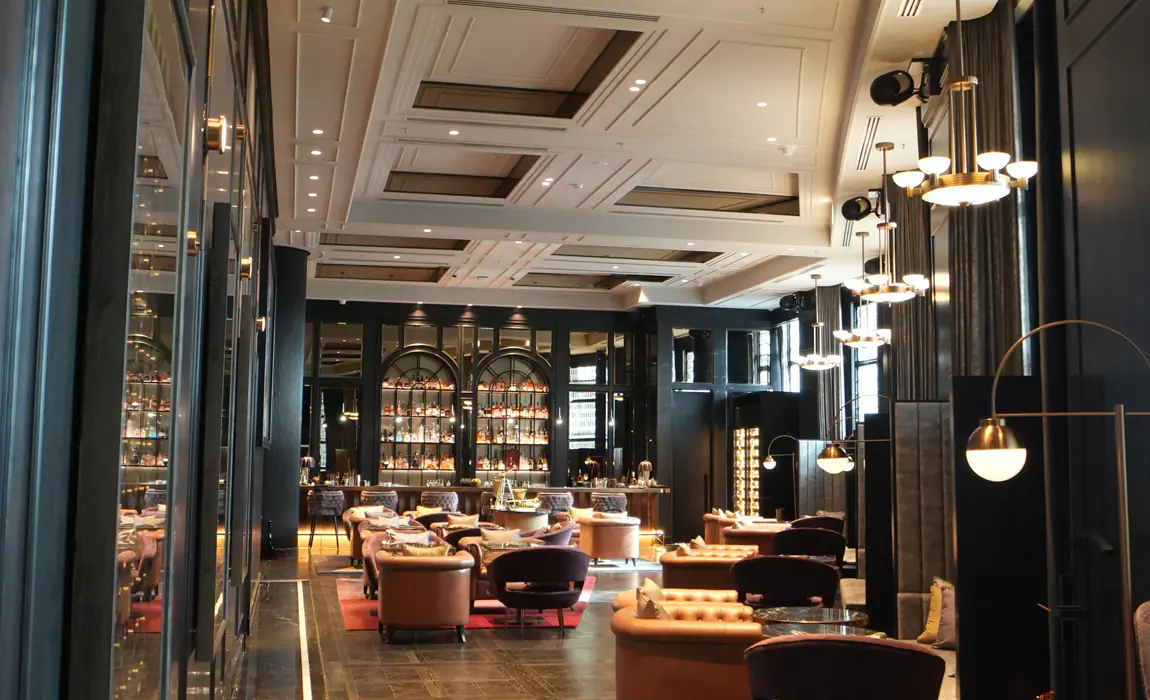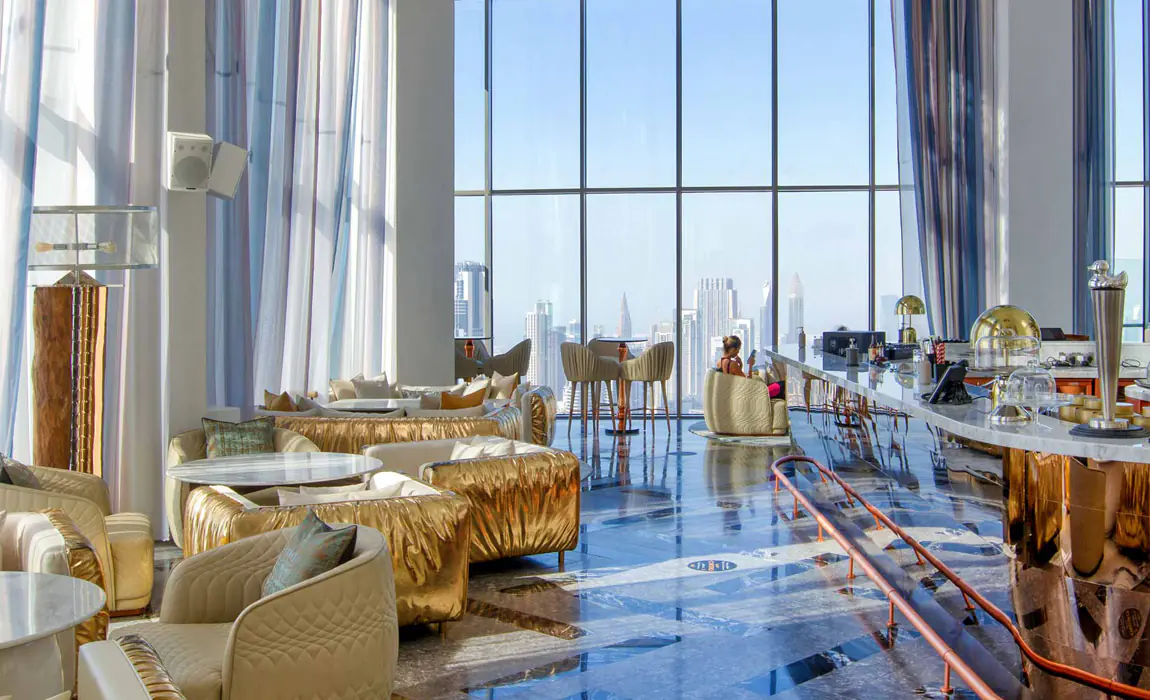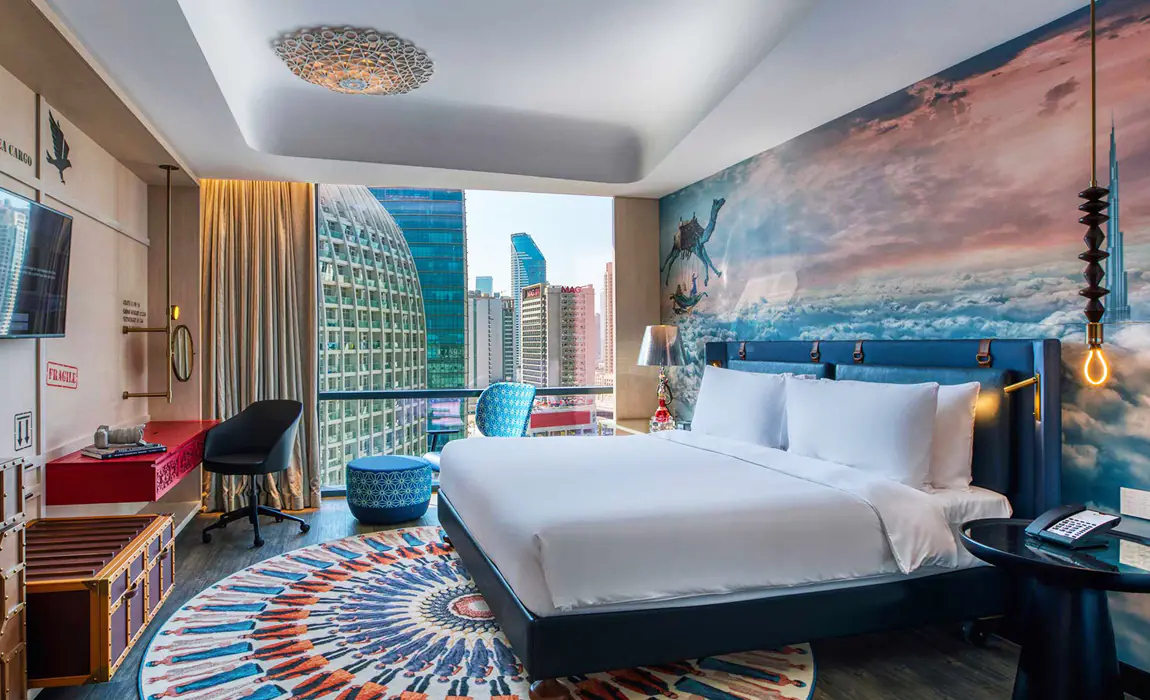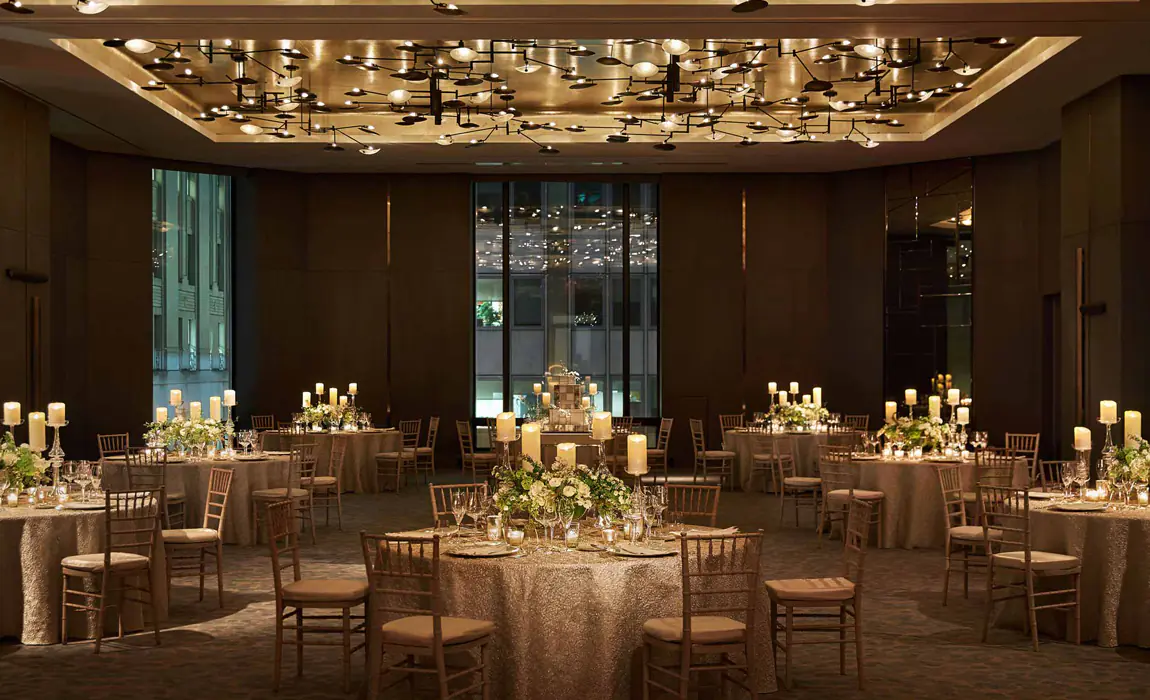Explore how luxury hotels and resorts are using technology to craft personalised, seamless and future-ready guest stays.
Hospitality has always been about more than providing a room or a meal. At its best, it is about creating memories, immersive experiences that linger long after a guest checks out.
In today’s world, however, luxury is no longer defined by marble lobbies, gourmet dining or attentive service alone. Just like modern-day luxury cars, it is shaped by the seamless integration of cutting-edge technologies that make every interaction more personalised, intuitive and memorable.
Forward-looking hoteliers and resort operators now understand that technology is not a supporting act, but a co-star in crafting extraordinary guest journeys. This blog examines how smart solutions are transforming hospitality, not merely as a matter of convenience, but as a redefinition of luxury itself.
The New Hospitality Paradigm

For decades, luxury hospitality revolved around service excellence. Staff who anticipated needs, chefs who curated menus and concierges who orchestrated unique experiences.
But as digital-first generations dominate the traveller demographic, expectations have shifted. Today’s guests expect their hotel or resort stay to mirror the hyper-personalisation they experience with apps, streaming platforms and connected devices at home.
The implication is clear: a five-star property must now deliver experiences that feel bespoke, seamless and technologically effortless. From check-in to check-out, every touchpoint must radiate sophistication, comfort and convenience, all underpinned by smart systems working silently in the background.
Personalisation as the New Luxury
The modern luxury suite is evolving into a smart environment where technology is invisible, yet omnipresent. Guests can walk in and instantly tailor the room to their liking: curtains glide open with a touch, ambient lighting shifts to a preferred hue, temperature adjusts to comfort and the television syncs with their favourite streaming service.
This personalisation is not just about convenience; it transforms the room into an extension of the guest’s lifestyle. A business traveller might choose a focused “work mode” with bright lighting, ergonomic desk arrangements and productivity tools, while a couple on vacation may opt for a “romantic mode” with warm lights, curated playlists and a softly lit ambience. By integrating guest profiles into the property’s management system, preferences can even travel with them across different locations within the hotel chain, reinforcing loyalty and brand connection.
Entertainment Without Compromise
In-room entertainment has transcended the flat-screen television. High-end hospitality today incorporates immersive media solutions that rival dedicated home cinemas. Hospitality AV solutions, including Ultra-short-throw projectors and 4K or 8K displays turn suites into private theatres, while surround-sound audio systems elevate the cinematic experience.
Equally important is flexibility. Guests increasingly want to bring their own content into the space, whether through streaming platforms, casting from personal devices or even cloud gaming. Hotels that enable seamless integration with Netflix, Prime Video or gaming services differentiate themselves by offering familiarity with a layer of luxury. For younger demographics, VR entertainment pods or interactive gaming setups in premium suites can transform a stay into an unforgettable, next-generation experience.
Tech-Enhanced Serenity
Wellness has become central to the luxury hospitality proposition. Guests are not merely seeking relaxation but rejuvenation, a retreat that blends body, mind and environment. Technology, when applied thoughtfully, enhances this aspiration.
Circadian lighting systems mimic natural daylight cycles, helping travellers recover from jet lag or achieve deeper rest. Air purification systems create healthier environments, while immersive soundscapes turn spa treatments into multisensory journeys. In outdoor areas, discreet landscape audio and weatherproof displays ensure that guests experience serenity without disruption. Even yoga decks or meditation pavilions can be equipped with gentle AV elements, blending nature and technology in harmony.
Here, technology does not dominate but recedes into the background, enriching the spa experience without breaking the illusion of tranquillity.
Culinary Experiences Reimagined

Fine dining in luxury hotels is no longer defined solely by cuisine. Technology is increasingly shaping how meals are presented, discovered and enjoyed. Interactive digital menus allow guests to explore dishes with augmented reality overlays, showcasing ingredients or wine pairings in visual detail. LED video walls and projection systems can create thematic dining environments. An ocean backdrop for a seafood restaurant, or a Tuscan vineyard ambience for an Italian trattoria.
Equally significant is audio. Background music, curated carefully for different spaces, whether a rooftop bar, an all-day café or a fine dining restaurant, creates the emotional texture of the dining experience. When managed through centralised AV systems, these soundscapes can be tailored precisely to the time of day, the type of clientele or even special events. The result is an atmosphere that feels effortlessly curated, yet technologically precise.
The Seamless Guest Journey

Luxury is often defined by what guests do not notice: the absence of friction. Technology enables this seamlessness across the guest journey, beginning at arrival. Mobile check-in and keyless entry systems allow travellers to bypass queues, while facial recognition kiosks add both security and convenience.
Once checked in, wayfinding systems and interactive digital displays make navigating expansive resorts intuitive. Voice-enabled assistants or in-room tablets act as digital concierges, allowing guests to book a spa treatment, order in-room dining or request a car without picking up the phone. By interconnecting these services into a unified guest interface, hotels deliver not just convenience but the sense of being personally catered to, an essential hallmark of true luxury.
The Tech Edge in Event and Banquet Spaces

Hospitality is also defined by its event capabilities. For business travellers, destination weddings or corporate conferences, the quality of a property’s event spaces can make or break its reputation.
Today’s luxury venues are expected to be hybrid-ready. High-end audio systems, expansive LED video walls and intelligent lighting infrastructure are just the baseline. Enterprises and wedding planners alike demand plug-and-play compatibility with platforms like Zoom, Microsoft Teams and Webex. Spaces must be flexible, adapting from a corporate AGM in the morning to a gala dinner at night. This requires back-end AV infrastructure that is modular, intuitive and robust.
When executed well, these spaces become showcases not only for the hotel but for the brand hosting the event. For operators, it means higher revenue opportunities and a reputation as a venue of choice for discerning clients.
The Silent Partner in Luxury
True luxury is increasingly inseparable from sustainability. Guests, especially younger ones, want to indulge without guilt. Technology enables hotels to meet this demand. Smart energy management systems optimise HVAC and lighting usage, reducing consumption while maintaining comfort. Water management systems ensure spa and pool facilities are eco-conscious.
Importantly, these solutions are largely invisible to the guest. Luxury remains uncompromised, while the property simultaneously reduces its carbon footprint and operating costs. The message to guests is subtle but powerful: indulgence here does not come at the planet’s expense.
Invisible but Indispensable
While guests interact with front-end technology, the real magic lies in the systems running behind the scenes. Centralised control systems allow staff to orchestrate ambience across multiple spaces at once, from the lobby to banquet halls to individual suites. AV-over-IP solutions ensure seamless integration across vast properties, enabling scalability without disruption.Importantly, these solutions are largely invisible to the guest. Luxury remains uncompromised, while the property simultaneously reduces its carbon footprint and operating costs. The message to guests is subtle but powerful: indulgence here does not come at the planet’s expense.
Data and analytics play a crucial role as well. By capturing guest preferences and behaviour patterns, hotels can anticipate needs with precision, whether it’s suggesting a favourite cocktail upon arrival or preparing a room with the lighting and temperature settings preferred on a previous stay. This fusion of analytics and hospitality humanises technology, making each interaction feel personal rather than mechanical.
Security, Privacy and Trust
In a hyper-connected environment, luxury is also about trust. Guests entrust their personal data and digital habits to the property’s systems. Secure networks, encrypted communications and discreet surveillance reassure them that convenience does not compromise safety.
Equally important is subtlety. Smart surveillance systems enhance security without being obtrusive, maintaining the sense of privacy that defines luxury hospitality. The balance between transparency and discretion becomes a defining attribute of trust, ensuring that technology empowers rather than intimidates.
Where Luxury Meets Tech
Luxury hospitality has always sought to delight guests in unexpected ways. What is changing is the toolkit. The future of indulgence is no longer defined solely by opulent design or attentive service; it is defined by experiences that are seamless, personalised and enriched by intelligent technologies.
For enterprises in hospitality, the challenge is not simply to adopt technology, but to integrate it in ways that feel natural, human and elevating. At Actis, we help leading hotels, resorts and hospitality brands achieve precisely that balance by designing hospitality technology solutions where luxury and technology are not competing forces, but perfect partners in creating unforgettable guest experiences.
FAQ’s
Interactive screens in a restaurant or café setting offer a wide range of advantages that go beyond just looking modern, they enhance customer experience, improve operational efficiency and even drive revenue. Whether it’s a touchscreen kiosk, a digital tabletop, or an interactive menu board, the benefits are both customer-facing and back-of-house. (Refer Actis Technologies)
1. Faster and Smoother Ordering Process
One of the most immediate benefits is speed. With self-order kiosks or tabletop touchscreens, customers can browse the menu, customise their orders and pay without waiting for a server. This reduces queue times during rush hours and frees up staff to focus on food prep and hospitality rather than order-taking. It also minimises communication errors—what the customer taps in is what the kitchen gets. No more lost-in-translation moments between server and kitchen.
2. Enhanced Customer Experience
Interactive screens give customers more control and confidence. They can explore the menu at their own pace, view photos of dishes, filter for dietary preferences (e.g., vegetarian, gluten-free) and even read allergen info—all of which might feel awkward to ask in person. Some systems even offer upselling suggestions (“Would you like to add a drink or dessert?”) in a friendly, non-pushy way. It feels like a helpful nudge rather than a hard sell.
3. Better Menu Flexibility and Visual Appeal
Unlike printed menus, digital screens are dynamic. You can instantly update prices, remove out-of-stock items, or highlight time-based specials (like “Happy Hour Deals” or “Lunch Combos”). This level of flexibility is particularly useful for seasonal menus or rotating dishes. Plus, rich visuals including images, videos and animations, make dishes more tempting. Studies show that people are more likely to order food they can see.
4. Integration with Loyalty and Payment Systems
Many interactive displays integrate seamlessly with POS systems, mobile payments and loyalty programs. This means customers can scan a QR code to pay, collect reward points, or redeem offers, all on the same screen. It speeds things up and encourages repeat visits.
5. Labour Efficiency and Cost Savings
While there’s an upfront investment, interactive screens can reduce your long-term labour costs. A kiosk doesn’t call in sick or get overwhelmed during peak hours. Instead of hiring more staff, restaurants can reassign team members to food delivery, customer care, or quality checks.
6. Data Collection and Personalisation
These systems can also collect useful data, like what items are most viewed but not ordered, which combos perform well, or which times see the most upselling success. Over time, you can use this insight to personalise the experience or fine-tune the menu.
7. Interactive Jukebox for Personalised Music Selection
Some cafés and casual dining spots integrate interactive screens as modern jukeboxes, allowing patrons to browse and queue up songs of their choice. This not only enhances the ambience but also gives customers a sense of involvement in shaping the vibe of the space. Whether it’s selecting background jazz for brunch or upbeat tracks for a group dinner, this feature adds an extra layer of engagement, especially appealing to younger, tech-savvy diners.
So interactive screens in cafés and restaurants aren’t just cool tech, they’re practical tools that enhance service, increase order value and help businesses adapt to modern customer expectations.
Modern hotel rooms have quietly undergone a bit of a tech transformation in recent years and smart technology is at the heart of it. It’s no longer just about a comfy bed and a minibar—hotels are rethinking the entire guest experience with a mix of automation, personalisation and seamless control.
One of the biggest shifts has been toward app-based room control. Instead of fumbling with unfamiliar wall switches or calling the front desk, guests can now use their phones—or in-room tablets—to control everything from lighting and temperature to curtains and entertainment systems. Want the lights dimmed, the AC at 22°C and your favorite playlist playing as you walk in? Many rooms can now handle that without you ever touching a switch.
Personalisation is a big theme too. Some hotel systems now remember your preferences across stays—whether that’s the room temperature you like, the language you speak, or the kind of music you usually play—so your environment adjusts itself the moment you check in. And speaking of check-in, keyless entry via smartphone is becoming the norm, not the exception.
Voice control is another layer being added to the mix, especially in higher-end properties. Think Alexa- or Google-powered experiences tailored specifically for the room—so you can say “Good morning” and trigger a routine that opens the blinds, turns on the news and adjusts the lighting.
Then there’s integration with guest services. Many smart hotel rooms let you order room service, schedule housekeeping, or book a spa appointment straight from your room’s control interface—no need to pick up the phone. Some even include augmented reality or touchscreen mirrors that display weather updates, news, or your itinerary while you get ready.
Energy efficiency is also getting a smart makeover. Occupancy sensors now help automate lighting and HVAC systems so that when a guest leaves the room, everything powers down to save energy. It’s subtle, but it adds up—both for the hotel’s bottom line and sustainability goals.
All of this is aimed at making the experience feel effortless. The best smart hotel rooms don’t throw technology in your face—they quietly respond to your needs in the background, creating a stay that’s more intuitive, efficient, and just a bit more luxurious.
Restaurant digital menus displayed on TVs have become increasingly popular due to their flexibility and visual appeal. Restaurants use several solutions to create and display digital menus in restaurants. Let’s take a look at some of them.
1. Digital Signage Software: Includes platforms like ScreenCloud, Yodeck, or NoviSign and allows for easy menu creation, scheduling and remote updates. It is also often cloud-based like most things today, enabling seamless management from anywhere.
2. Content Management Systems (CMS): This is specialised software for creating and managing digital menu content using services like MenuBoard Manager or Enplug. It offers templates and design tools tailored for restaurant menus.
3. Hardware Solutions: Sometimes establishments use dedicated media players (e.g., BrightSign, Intel NUC) that connect to TVs and store/play menu content and can be controlled remotely via network connections.
4. Smart TVs: Some restaurants use smart TVs with built-in OSes that can run digital signage apps directly without additional hardware. Examples include Samsung’s Tizen or LG’s webOS platforms.
5. Raspberry Pi Solutions: This is a low-cost, customisable option for tech-savvy restaurant owners and can run various open-source digital signage software. Although it requires a more technical setup, it makes up for it in term of flexibility.
6. Cloud-based Menu Services: Certain services provide end-to-end solutions including hardware and content creation and are often subscription-based with ongoing support
7. POS Integration: Some point-of-sale systems also offer digital menu board integration and utomatically update menus based on inventory or pricing changes.
8. Video Wall Controllers: These are generally used for larger installations with multiple screens and allow for synchronised content across several displays. They can create impressive large-scale interactive menu presentations.
9. Interactive Kiosks: These are self-service ordering systems with digital menus and generally use touchscreen displays for customer interaction. They can also integrate with kitchen management systems.
10. Mobile App Integration: Some solutions allow syncing between in-restaurant displays and mobile apps thus providing consistency across different customer touchpoints
When implementing these solutions, restaurants typically consider factors such as ease of use for staff to update menus, visual appeal and brand consistency, integration with existing systems (POS, inventory management), scalability for multiple locations, cost of hardware and ongoing software subscriptions, reliability and uptime and the ability to display dynamic content (e.g., daily specials, promotional items). Ultimately, the choice of solution often depends on the restaurant’s size, technical expertise, budget and specific needs.


